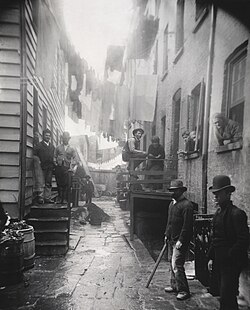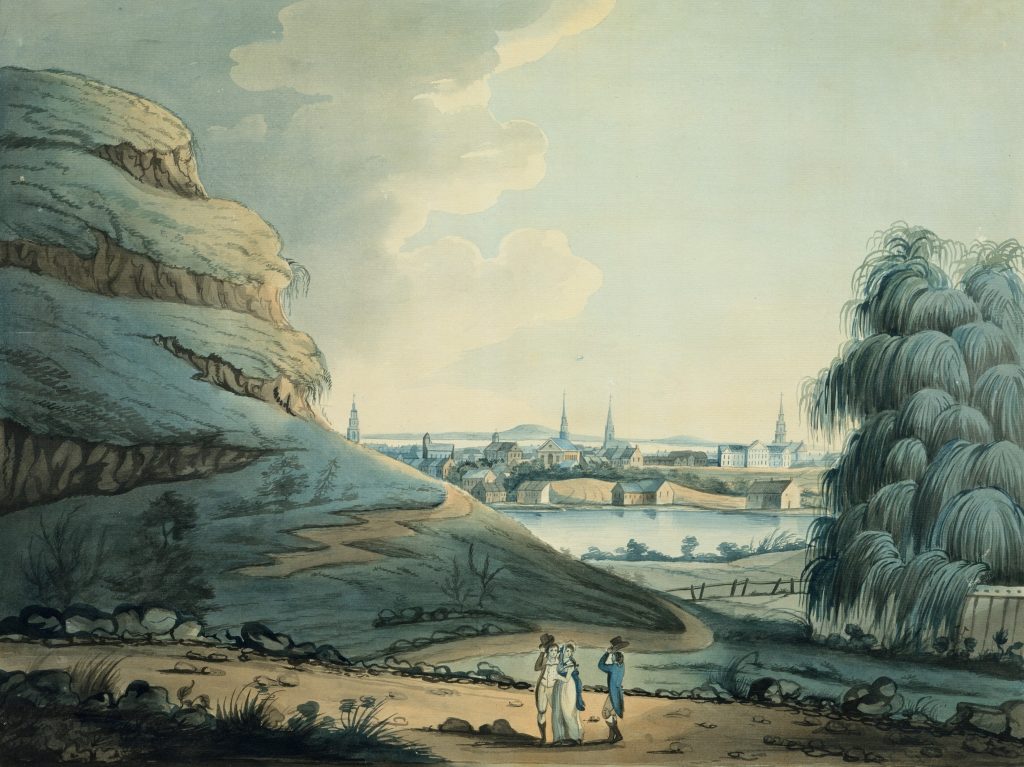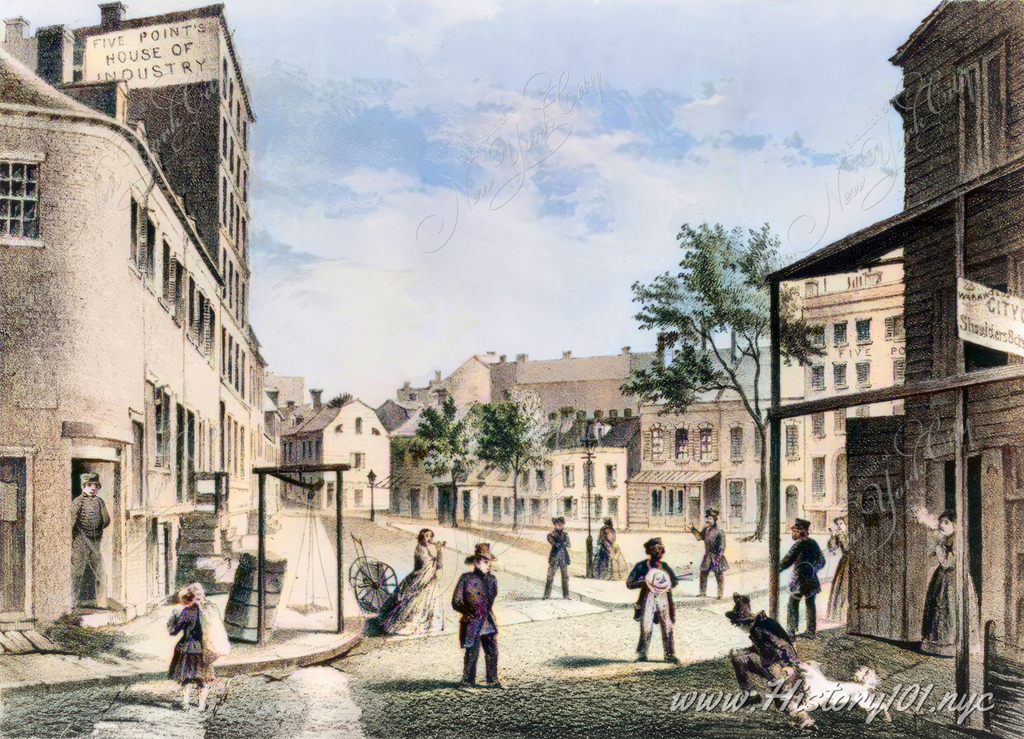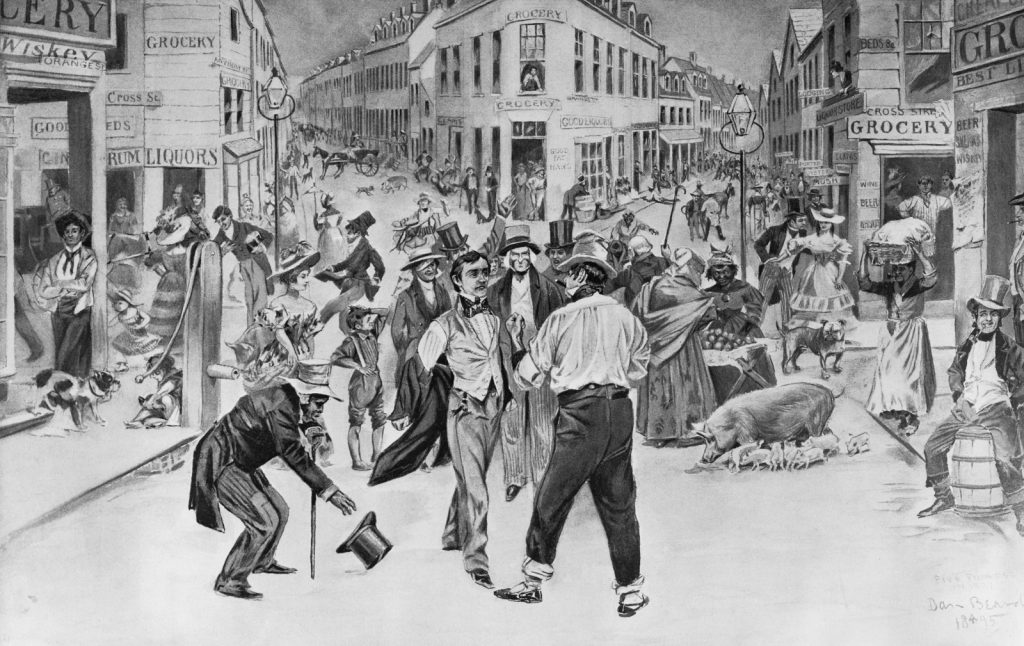
Witches of Five Points
Five Points has a fascinating history that covers topics ranging from sociology to health. However, there are not many mentions of witchcraft amidst the other accounts of violence, murder, riots, disease, and all those other fun things happening at the time.

Five Points Before 1820s
To set the scene of the following instances, we have to look at how Five Points came to be. In the 18th century, there was a large pond called Collect Pond, which was where a lot of fresh water for the area was collected from. It was a beautiful area that was used for picnics and ice skating. However, businesses started to spring up on the pond’s edge in order to use the water. These businesses ranged from a brewery to a slaughterhouse, and each polluted the reservoir. A proposition to clean the pond was rejected, and it was turned into a landfill in 1811. This was supposed to be a location for middle-class housing, but because the landfill was done poorl,y the ground began to sink, and gases from dying vegetation underground that was not treated properly made it an unpleasant area. Houses shifted in the mud, as did streets. Unfortunately, because of the bad drainage situation, the shifting wasn’t just from moisture and dirt but also human and animal waste. Needless to say, the middle and upper-class residents said, ‘no thank you’ and fled the area. This left a lot of available space for the poor immigrants flowing in from Ireland and other parts of Europe in the 1820s-40s.
1822
To go into a full in in-depth history of Five Points would take several pages, but the main thing to understand about the climate was that there was high poverty, high crime, high racial and ethnic tensions, and little to no law enforcement to speak of by the 1840s.
Superstitions and folklore were common ideologies in the Five Points. In 1839, The Universalist and Ladies’ Repository published a piece analyzing why these ideals of witchcraft were still prevalent. The writer speaks of an event that happened in about 1822, where three children became ill. But more shockingly to the author was that a schoolmistress, who was “possessing quite an ordinary share of intelligence,” believed that witchcraft was responsible.


Mary Boman
In 1829, Mary Boman accused Martha Ann Sloan and Catharine Lane of assault. When brought to trial, both women denied it and instead claimed that Mary was threatening them and they knew her to be a witch. When the magistrate asked, in what way they were fearful of being bewitched, the response was “The old fashioned Salem way, I suppose.”
Sloan and Lane accused Boman of making “human dolls” and infecting children in the area with incurable diseases. The dolls she would pick with needles and throw into fires. A sailor named Bright reportedly called Boman a “Five Point Ranger”. He said Boman could summon “the Forties”. The Forties referred to the Forty Thieves, which was a violent gang that ran the Five Points in the 1830s.
Even with the rumors, the judge determined that when the women being questioned admitted they couldn’t sign their own names, that their lack of education was the cause of their beliefs in witchcraft and did now adhere to any charges of that nature.